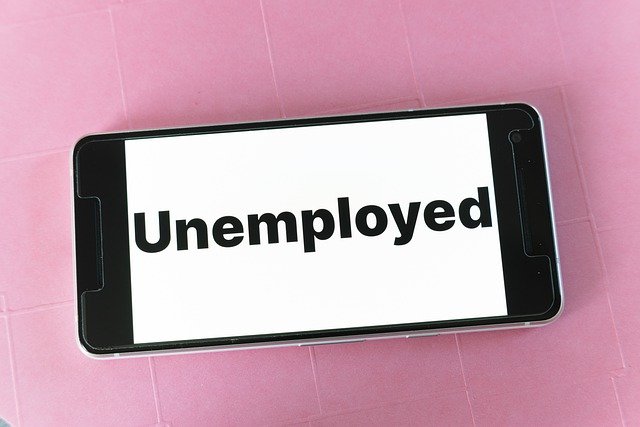About this time last year, the state’s Department of Labor, Division of Unemployment Insurance (DUI) was processing unemployment claims smoothly—and more-or-less efficiently—despite its antiquated, but reliable, computer software.
Its legacy workflows were built on decades of institutional knowledge and a stable set of eligibility rules for disbursing unemployment benefits. DUI maintained reasonably good customer service.
But make no mistake about it, DUI’s pre-pandemic benefits processing work was a complex, industrial-sized, undertaking.
All of that was clobbered with the post-pandemic advent of safety-net programs for independent contractors, freelancers, sole proprietors, or gig workers—exacerbated by a historical surge of new unemployment claims.
Federal legislation created four new programs—the largest of which was Pandemic Unemployment Assistance (PUA). These programs required DUI to extensively, and quickly, revamp its control processes over eligibility management, benefits tracking, and program administration—before it could assure the federal government of its capabilities for compliance with the strings attached to the money.
The pandemic dragged on. And the programs continuously needed fresh cash infusions. Four bouts of federal legislation authorized new spending, and the-then president authorized emergency funding for a fifth because of Congress’s pre-election gamesmanship.
During the 12 months beginning March 2020, the U.S. Department of Labor issued a blizzard of 36 different program management memorandums requiring DUI to revamp, redo and otherwise change its process and procedures despite having just implemented them for the new programs. Some changes were incremental, but a few likely required wall-to-wall or enterprise-level changes. In sum, these federal changes forced Maryland’s DUI to continuously scramble its program administration to keep up with constantly-changing ground rules. It seems DUI largely succeeded.
From inception, federal eligibility criteria for deciding benefits were broadly written, yet both novel and complex. Forced into an emergency footing, and trying to keep pace with continual changes from Washington, DUI triaged to develop informal best practices to process applications. It had to balance conflicting priorities of fast turnarounds and program integrity. But it had no short-term solutions—only trade-offs between higher levels of improper payments, and looser interpretations of federal eligibility rules.
From the outset, these new programs had obvious, and numerous, vulnerabilities to fraud. Not only was fraud inherently likely because of the novel rules, changing requirements, and quick processing times, the determinations of eligibility depended on single-party representations, often from citizens at wits end, and in frightful economic trouble.
DUI’s diligence led to the discovery of a large fraud scheme early-on, something that made national headlines.
COMMUNICATION and OUTREACH
In May 2020, DUI published several pamphlets to help users navigate its new Beacon system, and it released two publications, “Claimant Responsibilities” and “Unemployment Insurance in Maryland: A Guide to Reemployment.” They were meant to help applicants comply with federal requirements and navigate three things: eligibility questions; the application process; and the weekly WebCert procedures.
The guides haven’t been revised since they were created, and aren’t current, yet they remain mostly valid. However, they’re ineffective and unfit compared to their intended purposes. They are kind of like something DUI wrote to fulfill a federal requirement rather than communicate current practice, policy and procedure, or serve as a “win-win” tool providing dual benefits of helping beneficiaries and pre-empting various government SNAFUs. Today, unfortunately, these guides are mere artifacts of last year’s compliance exercise, like manuals filed on the bookshelf having almost no value in day-to-day operations.
The least DUI could do is to update the guides with the state’s lessons learned so far.
The aforementioned factors describing DUI’s administration-by-triage, combined with its poor guidance, communication, and outreach have caused a mess. The mess consists of a sizeable backlog of disputed claims; too many requests (or demands) that claimants repay their previous benefits; loud complaints; and angry, frustrated or confused customers.
While DUI is hunkered down with desk audits to adjudicate the backlog on a case-by-case basis, it doesn’t seem to have acted to solve the shortcomings that created the backlog in the first place. Rather, DUI appears to be managing the front-end eligibility decisions as a back-room operation without sunlight that would illuminate the process to applicants in an effort to pre-empt as many of the now-chronic problems as possible.
It might help if DUI did five things right now:
- bring its guidance up to date
- clarify eligibility criteria
- create a glossary to define their jargon
- publish a list of best practice for claimants, and
- communicate five or ten of the most common scenarios for disallowing claims.
And DUI needs to start answering their phones. However, to paraphrase W. Edwards Deming, a famous management consultant, if you can’t describe your process, you don’t know what you’re doing. And you don’t answer the phones.
ONGOING CONFUSION
When claimants are confused about the rules, DUI must recognize the insidious and adverse effect on program integrity caused by confused claimants who can’t talk to DUI yet forced to certify factual information responsive to the WebCert’s weekly questions. There’s a big temptation to answer based on a self-serving rationale such that benefits don’t terminate. The technical term applicable for DUI’s acquiescence of these conditions is – “contributory negligence.”
In sum, there’s no shortage of confusion, but the following four matters exemplify some of the problems.
1. Renewal process demonstrating continued attachment to the workforce
The CARES Act extension passed in December 2020 imposed a requirement for beneficiaries of Pandemic Unemployment Assistance (PUA) to prove a “continuing attachment to the workforce.” The requirement can be confusing because unemployed persons often don’t have proof because they lack work. Negative responses presumably are likely to terminate benefits. DUI has no instructions or examples to clarify this requirement.
2. Fact-finding questionnaire
DUI uses a six-page fact-finding questionnaire seeking answers to questions about whether PUA claimants are keeping in contact with customers. It has no instructions, asks redundant questions, sounds accusatory, and doesn’t seem to have a deadline for responses. It’s a poorly designed questionnaire that needs to be redone.
3. Contradiction
Claimants are required to certify weekly that they “…maintained contact with… [the] previous employer or customers to determine if work was available during [the last week.]” This requirement can be easily interpreted to contradict the exemption from actively seeking work. That contradiction must be cleared up.
4. Different methods of accounting for earnings
Claimant earnings must be reported weekly, and weekly inputs to WebCert about earnings serve to reduce benefits by the amount of earnings. However, there are two accounting methods.
DUI recognizes income from commissions on the “cash basis” and all other compensation on the “accrual basis.” Meaning that commissions don’t count as earnings until they’re received, but all other compensation is recognized when earned. The problem arises because self-employed people usually are paid a fixed price after they finish work. Their compensation is based on the same legal definition of commissions, but payments aren’t labeled commission. Their customer contracts, if they are written, simply specify the fixed price to be paid after the work is completed satisfactorily. These different accounting methods and ambiguity about the term commissions, appear to pose a potential for significant misunderstandings and deserve immediate clarification.
MORE PROBLEMS COMING
DUI’s passivity with communications and outreach will be a continuing impediment to future customer satisfaction. But there are at least two major problems in the offing that haven’t yet become public. Both are likely to be inevitable, and DUI is likely to be aware of them right now.
First, DUI keeps a list of beneficiaries who have wrongly been paid benefits, and are expected to refund money. It’s reasonable to assume the list is growing too quickly, as DUI slowly adjudicates disputes and doesn’t do enough to preempt new ones. Federal law (the Debt Collection Act) generally requires the state to recover improper payments. In these circumstances, however, recovery required by law could be a nightmare.
Second, DUI requests documents from claimants but “temporarily suspends” deadlines for responses, or allows claimants liberal deadlines. The documents being requested demonstrate to DUI that claimants continue to be eligible for benefits such as documentation responsive to fact-finding inquiries, or proving a continuing attachment to the workforce.
DUI’s liberal deadlines for responding mean that answers bearing on eligibility are deferred for months while claimants continue to receive benefits. Loose and protracted deadlines put claimants at substantial risk of retroactive disallowance of their benefits. DUI must recognize that the overwhelming majority of disputes about the need for repaying thousands of dollars will be vigorously contested and DUI itself runs a real risk of being accused of causing the misunderstanding.
CONCLUSION
There’s a search for scapegoats. Gov. Hogan’s defense of the cognizant state officials has been less than convincing because he hasn’t cited specifics.
Attorney General Brian Frosh last week sent a letter to Hogan demanding a fix. Frosh certainly knows that running these benefits programs must be prudently administered, and he knows the risks attendant to trading off higher levels of improper payments, against looser interpretations of federal eligibility rules. But he may not be balancing the mitigating circumstances—or recognizing the fact those officials seem to have, on balance, prudently guarded the public money while doing a good job about the matters within their control.
In the end, these recent developments suggest an outcome similar to what happened to the first CEO of the Maryland Health Benefit Exchange, who was sacked despite many months of heroic effort.







Recent Comments